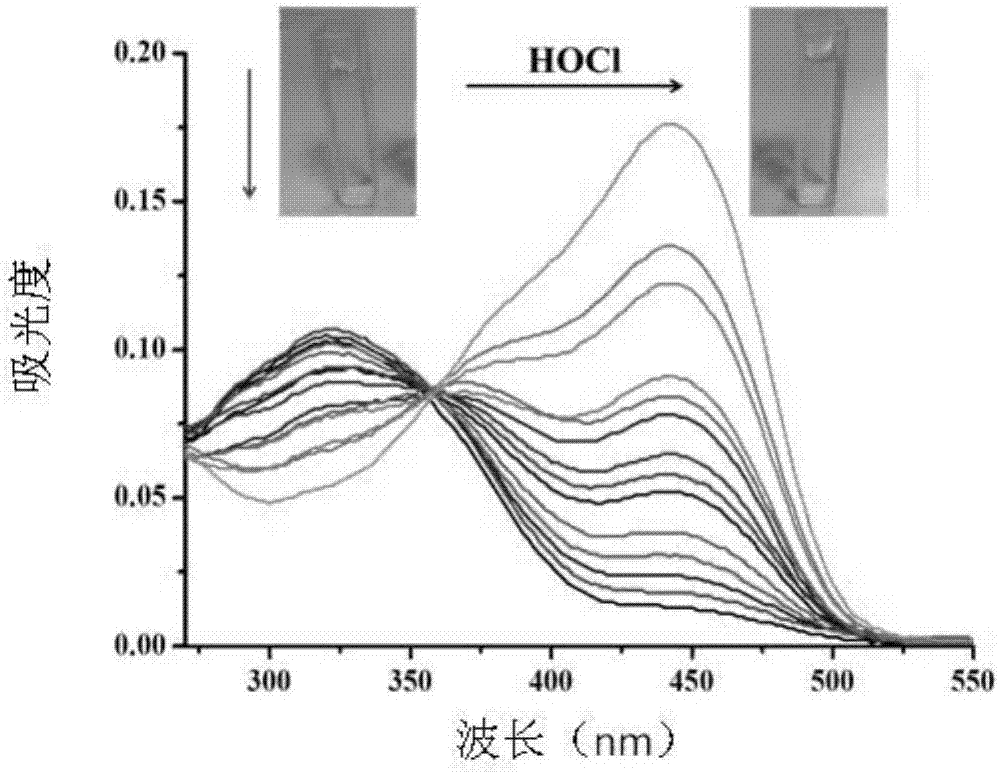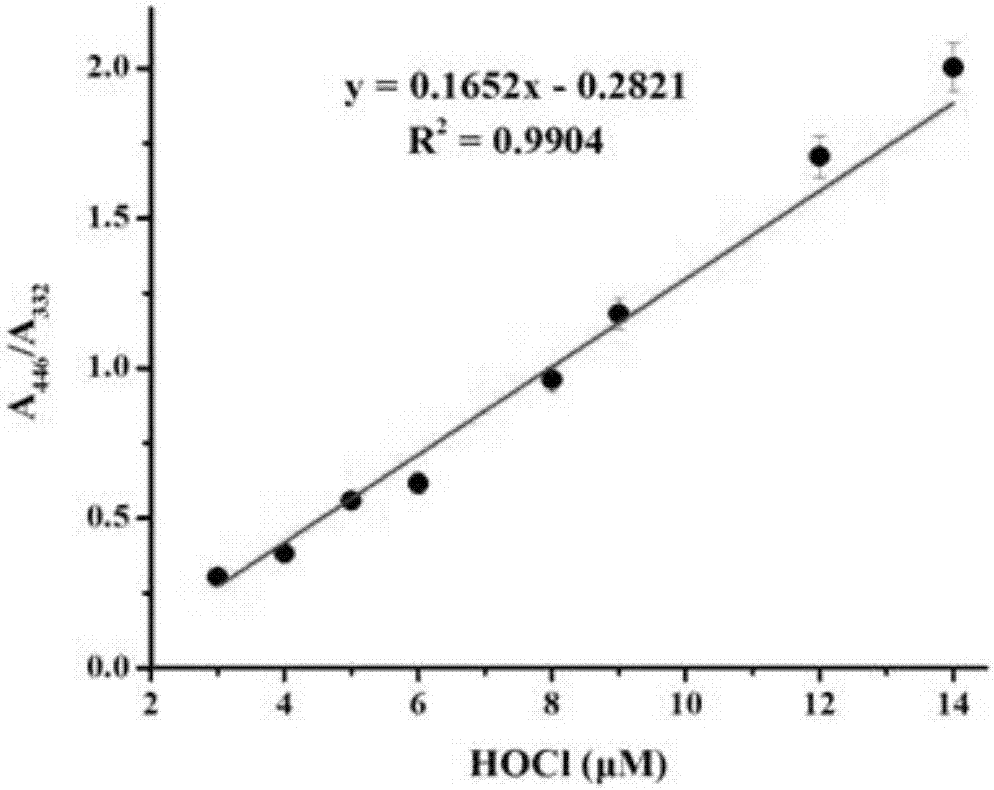Preparation and applications of phenylboronic acid type hypochloric acid colorimetric fluorescence probe
A hypochlorous acid and preparation technology, which is applied in the direction of fluorescence/phosphorescence, luminescent materials, and material analysis through optical means, can solve the problems of complex synthesis, poor selectivity, and low sensitivity, and achieve simple synthesis, good stability, and low cost. cheap effect
- Summary
- Abstract
- Description
- Claims
- Application Information
AI Technical Summary
Problems solved by technology
Method used
Image
Examples
Embodiment 1
[0035]
[0036] (Scheme 1) Dissolve benzothiazole-2-acetonitrile (348mg, 2mmol) and p-aldehyde phenylboronic acid (300mg, 2mmol) in 20mL absolute ethanol, then add diisopropylethylamine (646mg, 3 mmol), and the reaction solution was reacted at room temperature for 6 hours. After the reaction was completed, the solvent was removed by rotary evaporation to obtain a crude product, which was then separated and purified with a silica gel column (dichloromethane: petroleum ether = 2:1 as the eluent) to obtain 508 mg of a yellow solid with a yield of 83%.
[0037] (Scheme 2) Dissolve benzothiazole-2-acetonitrile (348 mg, 2 mmol) and p-aldehyde phenylboronic acid (330 mg, 2.2 mmol) in 20 mL of absolute ethanol, then add diisopropylethylamine (646 mg , 3mmol), the reaction solution was reacted at room temperature for 6 hours. After the reaction was completed, the solvent was removed by rotary evaporation to obtain a crude product, which was then separated and purified with a silica...
Embodiment 2
[0042] The inventor of the present invention has carried out following test: (a) under the condition of PBS pH=7.4 hypochlorous acid of different concentrations influences on the absorption spectrum of probe solution; (b) the linear relationship diagram of quantitative analysis of hypochlorous acid by absorption spectrometry; The above measurements were carried out in an aqueous solution of 10 mMPBS, the probe used was the probe prepared in Example 1, and all spectral tests were measured at 25° C. for 1 min after the addition of hypochlorous acid. See Figure 1 for the results.
[0043] As can be seen from Figure 1, before adding hypochlorous acid, the absorption peak of the probe is at 320nm; after adding hypochlorous acid, as the concentration of hypochlorous acid increases, the absorption peak at 320nm gradually disappears and appears at 446nm a new absorption peak. The absorption peak was red-shifted by 126nm, and there was a perfect isosbestic point at 357nm, and the reac...
Embodiment 3
[0045] Under the condition of PBS pH=7.4, the impact of different concentrations of hypochlorous acid on the fluorescence spectrum of the probe solution, the illustration is the linear relationship diagram of the quantitative analysis of hypochlorous acid by fluorescence spectroscopy; the above-mentioned determination is carried out in the aqueous solution of 10mM PBS, so The probe used was the probe prepared in Example 1, and all spectral tests were measured at 25° C. after the addition of hypochlorous acid for 1 min. See results figure 2 .
[0046] figure 2 is the graph of the change of the fluorescence spectrum of the probe with different concentrations of hypochlorous acid. It can be seen from the figure that the probe has almost no fluorescence before adding hypochlorous acid; after adding hypochlorous acid, the fluorescence intensity at 515nm gradually increases with the increase of hypochlorous acid concentration. Moreover, a good linear relationship is maintained ...
PUM
 Login to View More
Login to View More Abstract
Description
Claims
Application Information
 Login to View More
Login to View More - R&D
- Intellectual Property
- Life Sciences
- Materials
- Tech Scout
- Unparalleled Data Quality
- Higher Quality Content
- 60% Fewer Hallucinations
Browse by: Latest US Patents, China's latest patents, Technical Efficacy Thesaurus, Application Domain, Technology Topic, Popular Technical Reports.
© 2025 PatSnap. All rights reserved.Legal|Privacy policy|Modern Slavery Act Transparency Statement|Sitemap|About US| Contact US: help@patsnap.com



